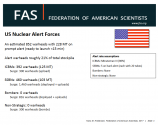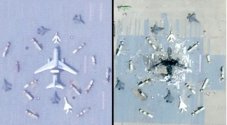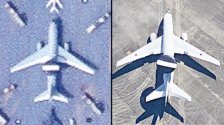I doubt PLARF really think they would deploy DF-41 in a manner that they need it to wander alongside the highway.41 is a lot heavier than 31. Some bridges or roads may not be able to support that weight. I suspect that this is the reason why DF-31A/AG will still be in service for the next decade.
That again, I agree that 41 is a far superior missile and will eventually make up the core of the road mobile TEL force for China.
The more reasonable guess is that PLARF will hide TELs in deep tunnel to withhold the incoming first strike and counterattack with more vulnerable but heavier silo ICBMs.
In a counterattack scenario, PLARF needs to destroy US airports, ports, CVGs, military compounds and major cities in less than 30 minutes, which apparently TELs can't achieve by its own readiness.
DF-41 can't ensure the annihilation of hard targets, so it is to threaten/coerce the soft targets after the 1st round of nuclear exchange. After all, US can only use their SLBMs to target Chinese silos, military facilities in such cases, there might be some cities left untouched. Meanwhile MM3 can't reach the mainland Chinese without reducing its throw weight and airports will be destroyed by silo ICBM or nuclear-armed DF-21 in few minutes. A DF-41 with three 535 warheads and high survivability is far superior to force US to back down after armageddon.



